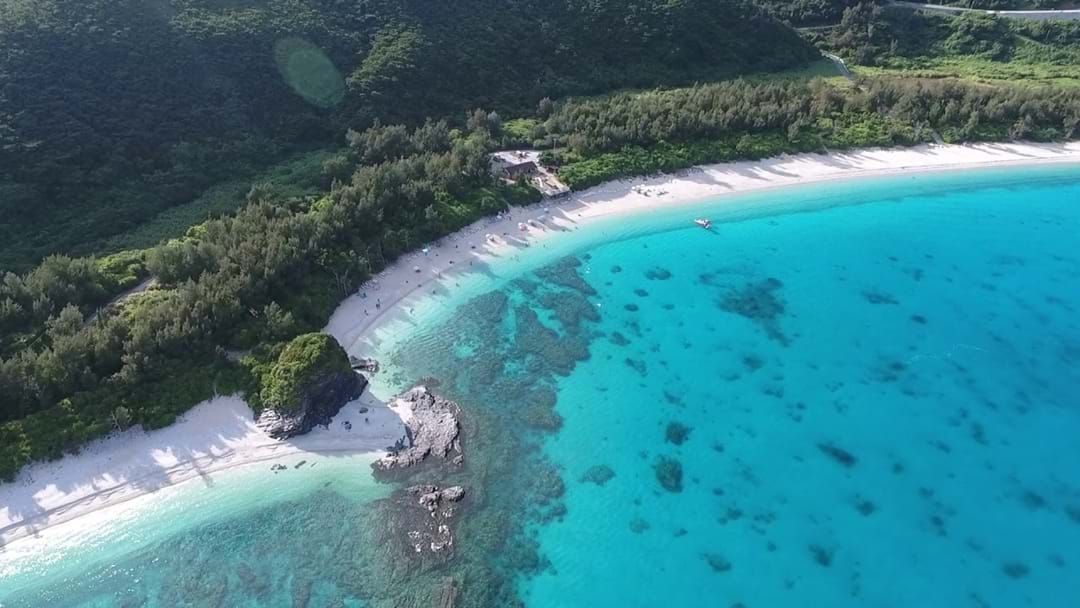The Beautiful Japanese Islands You Never Knew Existed But Need To Visit!
So stunning

With next to no information on their existence in Japan, other than a mere sentence or two in Lonely Planet, The Kerama Islands of Japan’s Okinawa prefecture are by far the country’s best kept travel secret and a native favourite.
Luckily for this writer, a Japanese student once let this little gem slip when I asked what he was up to over the summer.
Kerama Islands are a group of 22 islands, with only four inhabited; Tokashiki, Zamami, Aka and Geruma.
A good base for a lengthy stay is Zamami Island. Home to around 600 people, Zamami has hands down, the most breathtaking, untouched, pinch-yourself beaches you’ll ever see with your own eyes (IMO!). Japanese locals come flocking here for the unbelievable snorkelling at the famous Furuzamami Beach, swimming with gigantic turtles at Ama Beach, winter humpback whale watching, and superb year-round diving.
Access
Take a two-hour flight from Tokyo to Naha, Okinawa and jump on the next ferry to the island of your choice. Zamami is just over an hour’s ride away.
What to expect
This island is perfect for singles, families and couples as long as you like to take it easy. Don’t expect the Thailand or Greek Island beach party scene. This is the ultimate place to unwind after a huge weekend in Tokyo, regroup and live like a local.
What to do
The perfect day in Zamami would start with an early morning stroll to a nearby beach to catch the sunrise. If you’re feeling a little Zen, practice some yoga to start your day off (sit behind and copy a local, they are too polite to tell you to beat it). After breakfast, hire a bike or scooter and set off for Furuzamami beach. Here you’ll find some of the most beautiful coral and sea life, and water sports including stand up paddle boarding, kayaking and rafting are available.
 Alternatively, have a free day of map-less exploring. You’re guaranteed to find a few completely isolated beaches, with some of the best free deep-sea diving/snorkeling spots of your life. Day trip to the neighbouring islands via water taxis or kayak, or visit on a solo mission to the uninhibited islands and look out for the super shy Kerama deer!
Alternatively, have a free day of map-less exploring. You’re guaranteed to find a few completely isolated beaches, with some of the best free deep-sea diving/snorkeling spots of your life. Day trip to the neighbouring islands via water taxis or kayak, or visit on a solo mission to the uninhibited islands and look out for the super shy Kerama deer!
Let the afternoon take you to Ama Beach, where turtle families come to feed daily. Wait on the sand until you see their heads popping up for air (normally around 3pm) and feel free to join them for a swim. These beautiful babies (some the size of SMALL CARS. Seriously. Not joking) are so nonchalant they will let you swim around with them for hours. The experience is so surreal and will leave you catching your breath…and probably, if not definitely, crying.
Take a few drinks and platter goods with you and set out for one of the many observatory spots for the sunset. Have dinner at a local Izakaya and kick on with the locals for karaoke.
If you’re game, and have befriended some locals, ask them to take you to their ‘secret beach’ for a night swim. Immerse yourself in the fluorescent plankton lighting up the water with your every movement. An incredible site (think, The Beach).
Where to stay
There are plenty of guesthouses to stay on the island, including one international guesthouse with English-speaking staff. However, if you haven’t booked in advance and are a little strapped for cash, camping on Ama Beach is a fantastic and dirt-cheap option, with sites going for about $5 (AUD) a night.
What to eat/drink
You may have heard of the Okinawan diet, which is attributed to keeping them some of the longest living humans on earth. Delicious and traditional local cuisine is proudly showcased at all restaurants on the island, and worth getting in on. Indulging in this island’s fresh sashimi and some of the best handcrafted sushi of your life is a true culinary experience. Help yourself to the fluoro pink dragon fruit and passion fruit growing on trees all over the island.
Orion beer is an Okinawan specialty, which is on tap almost everywhere on the island and is absolutely perfect with seaweed soba noodles after a sweltering day at the beach. Steer clear of the local sake, Awamori, unless you wish to be paralytic for the remainder of your trip (the horror).
When to go
Summer is definitely the most popular time, however August and September are incredibly hot, even for an Aussie, so June/July would be your best bet. Aside from one or two typhoons towards the end of summer…and a cheeky earthquake here and there, the weather is almost always perfection.
Little tip
Most of the islanders were born and bred here and take the conservation of their home and keeping the peace very seriously. Enjoy yourself as much as possible but respect the locals (especially the older generations) and keep it in check!
It’s truly something special out there kids, and an absolute must on the life experience list.
Stay up to date on all things Hit Network with the app now!